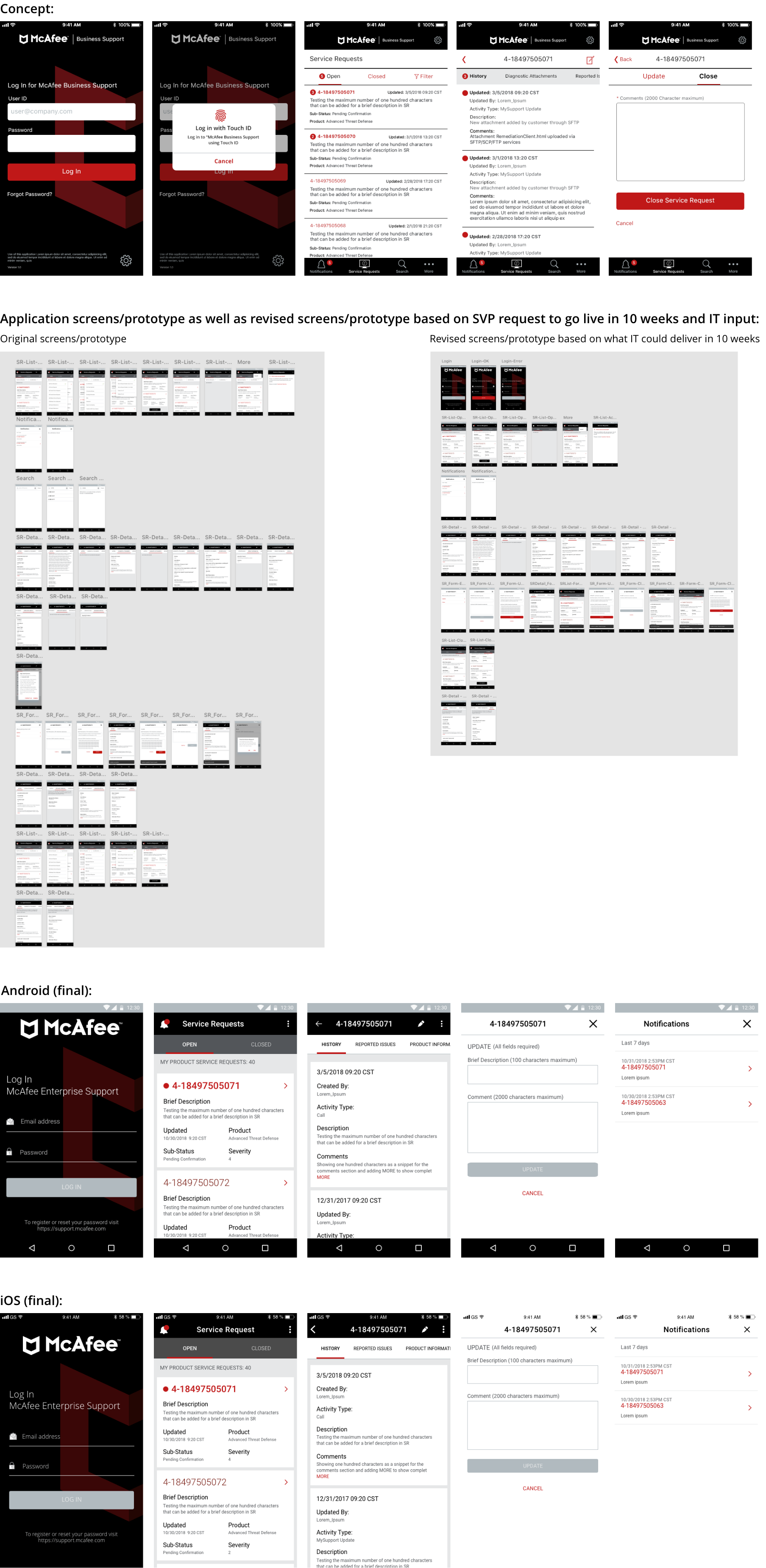UX/UI/IxD for New Support App
Define and design an iOS and Android app that will enable enteprise customers to receive notifications and update or close Service Requests.

Overview
Context:
Business customers were slow to respond to support agents and were not closing service requests after issue resolution, leading to inaccuracies in reporting for customer service operations.
Objective:
Develop a mobile application that allows business customers to efficiently manage their service requests, improving response times and closure rates.
Timeline:
10 weeks
My Role:
Led end-to-end design and UX strategy, serving as:
- UX Strategist
- CX/UX/UI Designer
- Product Manager
- Stakeholder Liaison
- User Researcher
Approach and Execution
Research and Planning:
- Stakeholder Alignment: Conducted discovery meetings with the Support SVP to define business goals, expectations, and constraints.
- Competitive and Internal Analysis: Reviewed Android and iOS support apps, along with existing McAfee applications, to identify best practices and usability gaps.
- User-Centered Architecture: Mapped out the app’s architecture, screen flow, and core functionalities based on:
- Existing service request workflows
- User survey feedback
- Insights from competitive and comparable analysis
Design and Iteration:
- Conceptual Design and Validation:
- Created wireframes and initial concept screens to highlight primary workflows.
- Secured SVP’s approval on key interactions and features before proceeding to high-fidelity designs.
- High-Fidelity Design and Prototyping:
- Designed screens and variations.
- Built an interactive prototype for user testing at an upcoming customer event.
- Agile Scope Adjustment:
- Upon an executive request to launch in 10 weeks, collaborated with the development team to define a feasible MVP.
- Prioritized core functionalities, adjusting screens and prototype accordingly.
Development and Implementation:
- Design Handoff and Documentation:
- Created detailed user stories outlining app functionality and interactions.
- Uploaded pixel-perfect Android and iOS designs to Zeplin for development.
- Cross-Functional Collaboration:
- Addressed UX/UI questions from developers, ensuring design fidelity.
- Participated in internal and beta testing, resolving usability issues as they emerged.
Key Outcomes
Results:
- ~20% of enterprise customers downloaded the app.
- Limited repeat usage indicated the need for additional features and feature enhancements.
- No significant improvement in service request response rates or closure, highlighting additional behavioral challenges beyond app accessibility.response rates or closures
Lessons Learned
- Behavioral Barriers: A mobile solution alone did not address the root cause of delayed service request responses. Additional engagement strategies were needed.
- Iterative Testing is Critical: Early user testing at the event provided valuable insights, but post-launch engagement tracking could have further refined the experience.
- Stakeholder Buy-in vs. User Needs: The SVP’s aggressive timeline constrained feature completeness, reinforcing the importance of balancing executive expectations with user requirements.
Conclusion
This project exemplifies my ability to lead UX strategy, execute rapid design iterations, and collaborate with stakeholders to drive product delivery under tight deadlines. While the initial impact was limited, the project did show that access was not the cause of delayed responses or the closing of service request by customers.